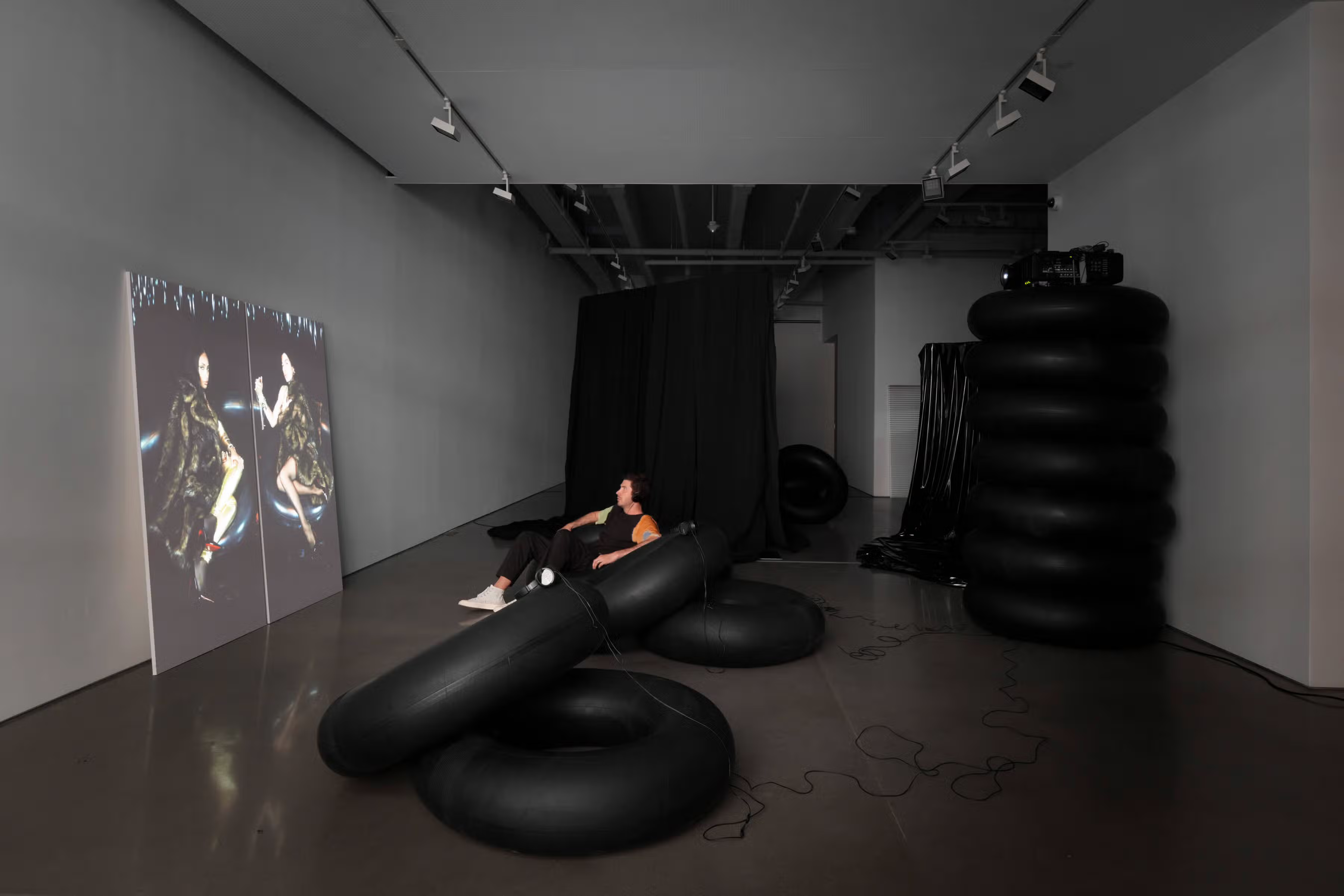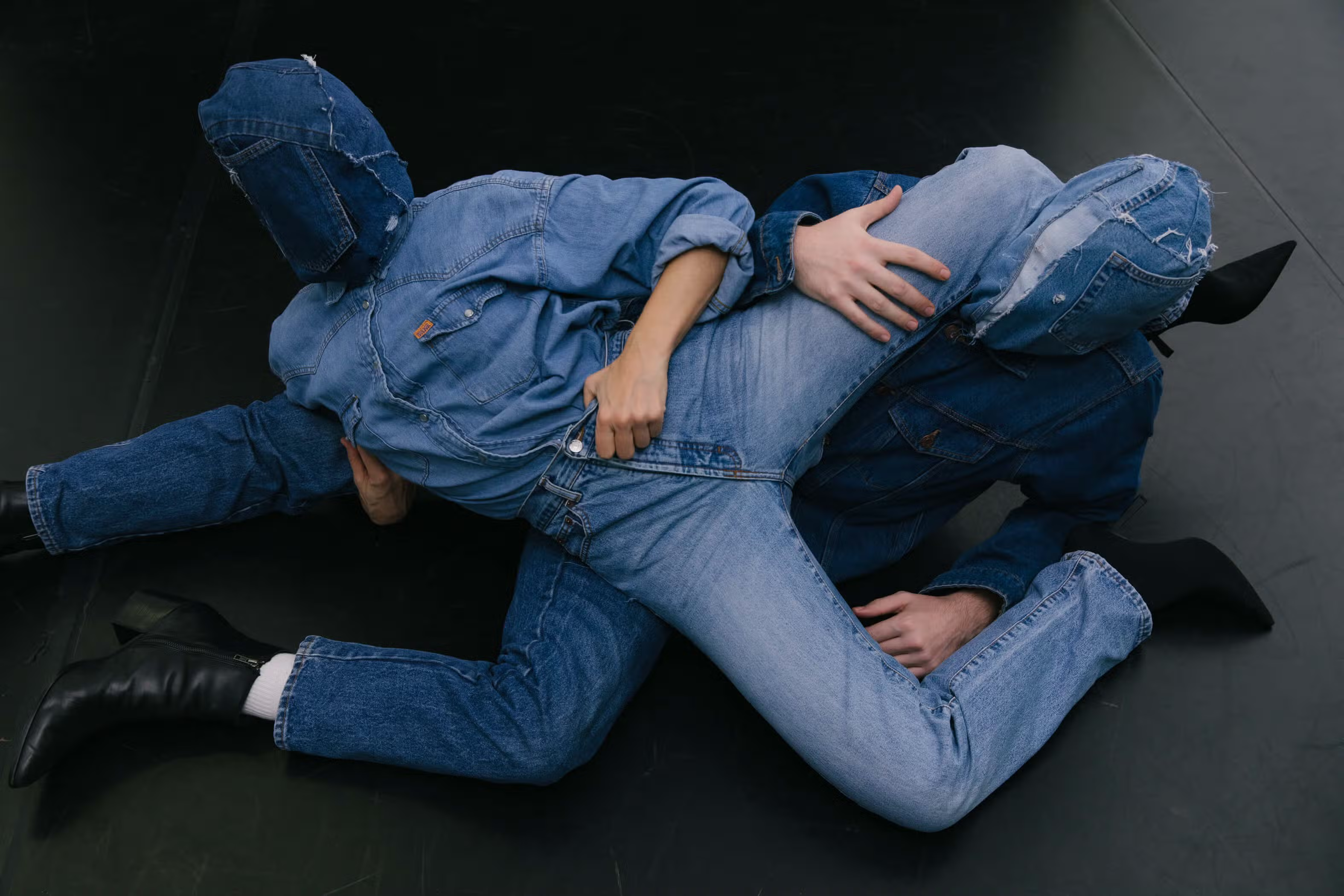
Installation shot of "Notebook." Image courtesy of Kurimanzutto.
In a dark room shrouded by glossy latex curtains, images are projected on a backdrop that frames two T.V.s and black rubber inner-tubes stacked like columns. The stage is set at Kurimanzutto for Alexandra Bachzetsis. Dressed in her signature denim ensemble with thigh-high red boots, Bachzetsis enters the middle of the room and interacts with a camera as if it’s a mirror. She sings, dances, and inspects herself through her digitally rendered reflection. Joined by her performance partner Antoine Weil, the two get dressed and undressed, complete with denim undergarments. They create intertwined sculptures with their bodies in movements filled with eroticism and restraint.
The performance marks the opening of the Zurich-based choreographer, performer, and artist’s solo show at Kurimanzutto, on view at its New York gallery through July 26. Aptly titled “Notebook,” the exhibition is an ephemeral confessional that explores themes of lust and innocence through catalogs of the artist's movement. This is the first iteration of the exhibition’s eponymous performance in the United States—her first showcase was in February of last year at the Kunst Halle Sankt Gallen in Switzerland.
Throughout the New York gallery, three video pieces with original music by composer Alban Schelbert underscore themes in Bachzetsis' performance. One video on view, titled Sophia the Robot Sees Her Reflection for the First Time, 2023, captures the artist and her scene partners turning themselves into provocateurs, evoking emotions of desirability and feverish movement.

Denim, 2023. Image courtesy of Kurimanzutto.
As she examines impulse, desire, and the state of surrender, Bachzetsis builds an ongoing physical language that subverts expectations to moving ends. She has previously toed the line between overt eroticism and confessional movement in an exploration of womanhood in popular culture, From A to B via C, 2014 (performed across Museo Jumex, Tate Modern, Swiss Institute, and Fundação Serralves). In Chasing a Ghost, 2019, at Art Institute Chicago, she investigated how bodies act as mirrors of larger symbols of popular culture.
Throughout Bachzetsis’ interdisciplinary practice, she continues to push her body towards dance that mirrors involuntary physicality, informed by a range of personal interests from surrealist automatism to tarantism. The latter describes a hysteric phenomenon from southern Italy in the 11th century, where people bit by spiders would dance for hours on end to prevent the poison from mixing with their blood. On the stage, Bachzetsis channels this enigmatic case of collective hysteria in her undulating, repeated movements. The result is a fragmentary and frenetic performance, structured in a similar fashion to the pages of a diary.
“Alexandra Bachzetsis: Notebook” is on view at Kurimanzutto until July 26th, 2024 at 516 W 20th street, New York, NY 10011.











.avif)

